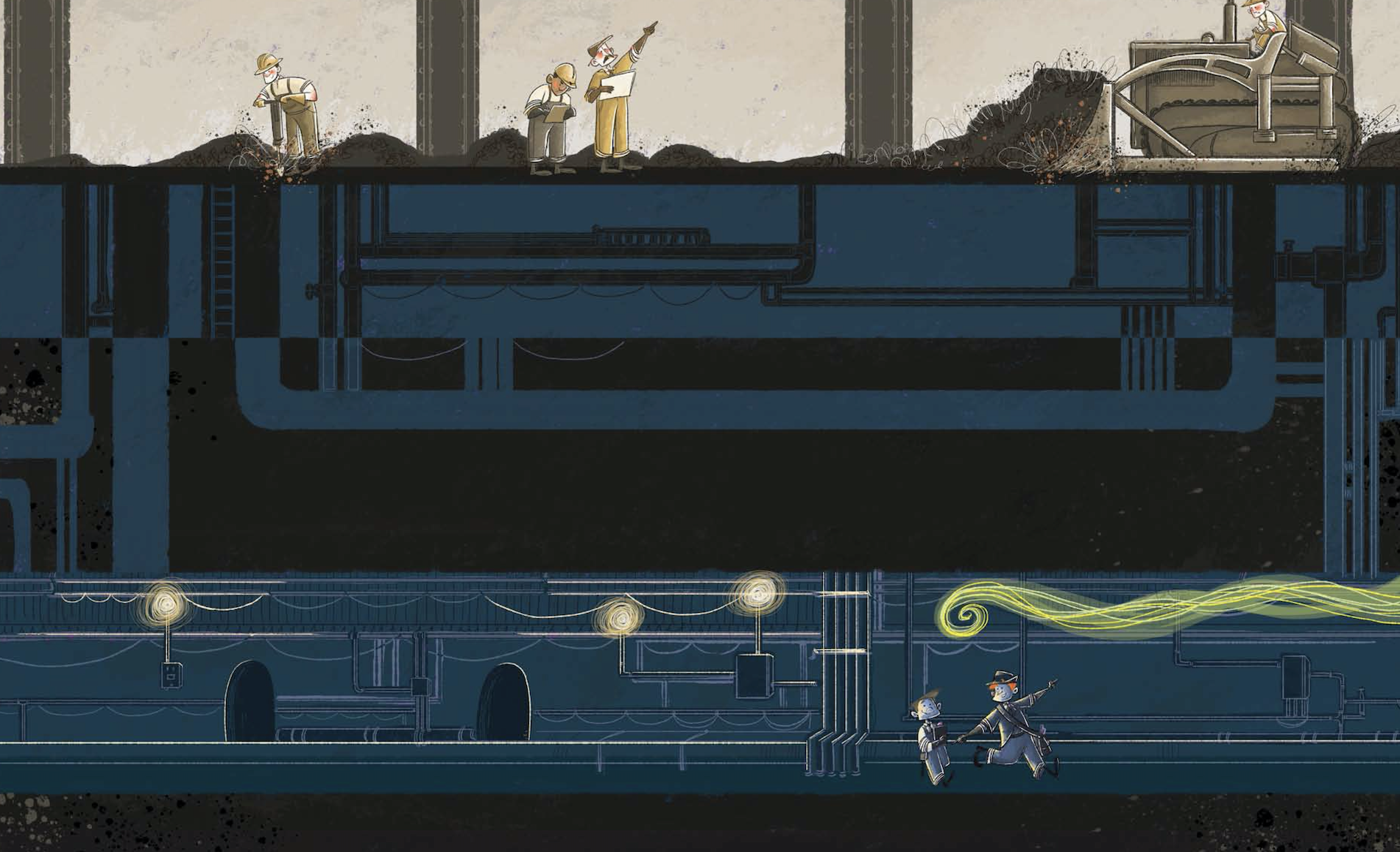I’ve had the good fortune of being in several book groups with Beth Anderson, a master at finding unusual stories that deserve to be widely known. Sometimes, in Lizzie Demands a Seat!: Elizabeth Jennings Fights for Streetcar Rights (illustrated by E.B. Lewis, Calkins Creek, shortlist for Goddard Riverside CBC Youth Book Prize for Social Justice), it’s a true story about a brave woman who deserves to be more widely known. With An Inconvenient Alphabet: Ben Franklin & Noah Webster’s Spelling Revolution (illustrated by Elizabeth Baddeley, Simon & Schuster, finalist for the Colorado Book Award), it’s the story of two famous people and a little known story about them — their quixotic pursuit of how to improve the English alphabet. Both books are Junior Library Guild selections and, guess what? So is her latest, which we’re going to talk about today: “Smelly” Kelly and His Super Senses!
Beth is a former English as a Second Language teacher, with linguistics and reading degrees, a fascination with language, and penchant for untold tales. She lives in Loveland, Colorado where she laughs, wonders, thinks, and questions; and hopes to inspire kids to do the same. I’m excited to welcome Beth to THE KIDS ARE ALL WRITE to give us a sniff at“Smelly” Kelly and His Super Senses, illustrated by Jenn Harney, from Calkins Creek.
How did you hear about “Smelly” Kelly? What made you decide to write a book about him?
I happened upon a short article about James Kelly, the first subway leak detective, and was immediately fascinated by all the bizarre, humorous, and dangerous experiences he had. A man who could smell water? Wow! Leaks and stinks? Even more fun! An unsung hero? I’m in! As a country girl, I always wondered what was beneath all those grates and manholes on city streets. Such a mysterious world beneath the pavement, and so full of essentials for our daily living – water mains, electric lines, internet cables, sewers, steam lines, and natural gas lines. As an author I saw kid-friendly angles like smells and heroes, and as an educator I loved the intersection of science and social studies topics as they play out in the real world.
The real“Smelly” John Kelly, using his famous nose. COURTESY HARPER COLLINS
How long was your journey from idea to book? How much did it change along the way?
I researched for a couple months and began to write in April of 2017. It was subbed in August, received some rejections, and went under contract in March 2018. The publishing process took two and a half years.
As I researched, I learned about the times and found that 1920-1950 was the golden age of detective stories. I had the first subway detective – so I tried writing it as a detective story. But the story fell flat. I kept coming back to his nose and ears as “super powers.” Researching more, I found the emergence of super heroes in that time period. That aspect was loads of fun to write, but I still had to find the heart. That’s where the manuscript underwent some trial and error. After much brainstorming on heroes, I found my “heart.” Overall, there were few changes. One of my favorite scenes was left behind, and I moved the super hearing farther in to build the arc. Then I tightened and strengthened the connecting thread.
Your research is impressive! Please tell us how you found your sources and how they helped shape your narrative.
I found only three sources: a magazine article, a newspaper article, and a chapter of a book. (A fourth article was found after we were in the publishing process.) All I really had to start working from were a collection of anecdotes. So basically, I had pieces of the midsection of the story. With so little on the main character, much of the narrative rested on understanding his world, both above ground and in the subway tunnels. One thing led to another as I googled and checked books, and any list of sources I found provided more paths. I consulted the New York Transit Museum, sought sources to help me learn about his tools and technology, and dug for diagrams of the infrastructure below ground.
I searched out New York City subway history, construction, the third rail, maps, public perceptions, and clandestine You Tube videos of subway tunnels. And I was fortunate to find an expert willing to answer my questions as they came up. Once I had an understanding, I could put myself there. But I needed to experience it as Kelly did with his super senses. How could I get that sensory experience? Never underestimate what’s online! I found an old stench map (late 19th c), industry map (1922), and sound map (1920s). The sound map had video links – a treasure trove! With all that I could begin to immerse myself in his world, as well as connect and enliven the scenes – with humor as well as heroism.
Which of Jenn Harney’s illustrations surprised or delighted you most?
The first tunnel spread with the dramatic palette and the underground world she created knocked my socks off. I loved that underground world! A later spread that showed Kelly in the tunnel but also the construction work going on above ground, made the cause/effect relationships clear with the growing city creating dangers in the subway.
I always think that every book I write changes me in some way. Did “Smelly” Kelly change you? And, if so, how?
I agree! There are always writing lessons that come from the unique challenge in each story, but there are personal lessons as well, as you work with themes and characters. An Inconvenient Alphabet and Lizzie Demands a Seat affected me on a deeper level than “Smelly” Kelly and His Super Senses. My biggest challenge in writing “Smelly” Kelly, connecting the scenes into a meaningful story, really came down to motivation and the force that drives us to do what we do—and consequently, brought some reflection on that. I think this book reinforced some ideas about finding one’s place in the world and providing opportunities for kids to shine.
What do you hope kids will take away from this story?
I hope kids will see there are all sorts of heroes (many who go unnoticed) and what a great attitude and sense of humor will do for you. But most of all, I want them to internalize the take-away on the last page….no spoiler here J .
Is there anything you would like to add?
Thank you for hosting me on your blog and for sharing “Smelly” Kelly and His Super Senses!
Thanks, Beth! Be sure to visit Beth on her website, where you can also find out about her upcoming books:
TAD LINCOLN’S RESTLESS WRIGGLE; PANDEMONIUM AND PATIENCE IN THE PRESIDENT’S HOUSE, illustrated by S.D. Schindler, Calkins Creek, fall 2021.
REVOLUTIONARY PRUDENCE WRIGHT: LEADING THE MINUTE WOMEN IN THE FIGHT FOR INDEPENDENCE, illustrated by Susan Reagan, Calkins Creek, spring 2022.
FRANZ’S PHANTASMAGORICAL MACHINE, illustrated by Caroline Hamel, Kids Can Press, spring 2022.
THOMAS JEFFERSON’S BATTLE FOR SCIENCE: BIAS, TRUTH, AND A MIGHTY MOOSE, illustrated by Jeremy Holmes, Calkins Creek, Fall 2022.
And follow Beth on social media here:
Website: bethandersonwriter.com
On Facebook: Beth Anderson
On Twitter: @BAndersonWriter
On Instagram: @BAndersonWriter
On Pinterest: @BAndersonWriter






